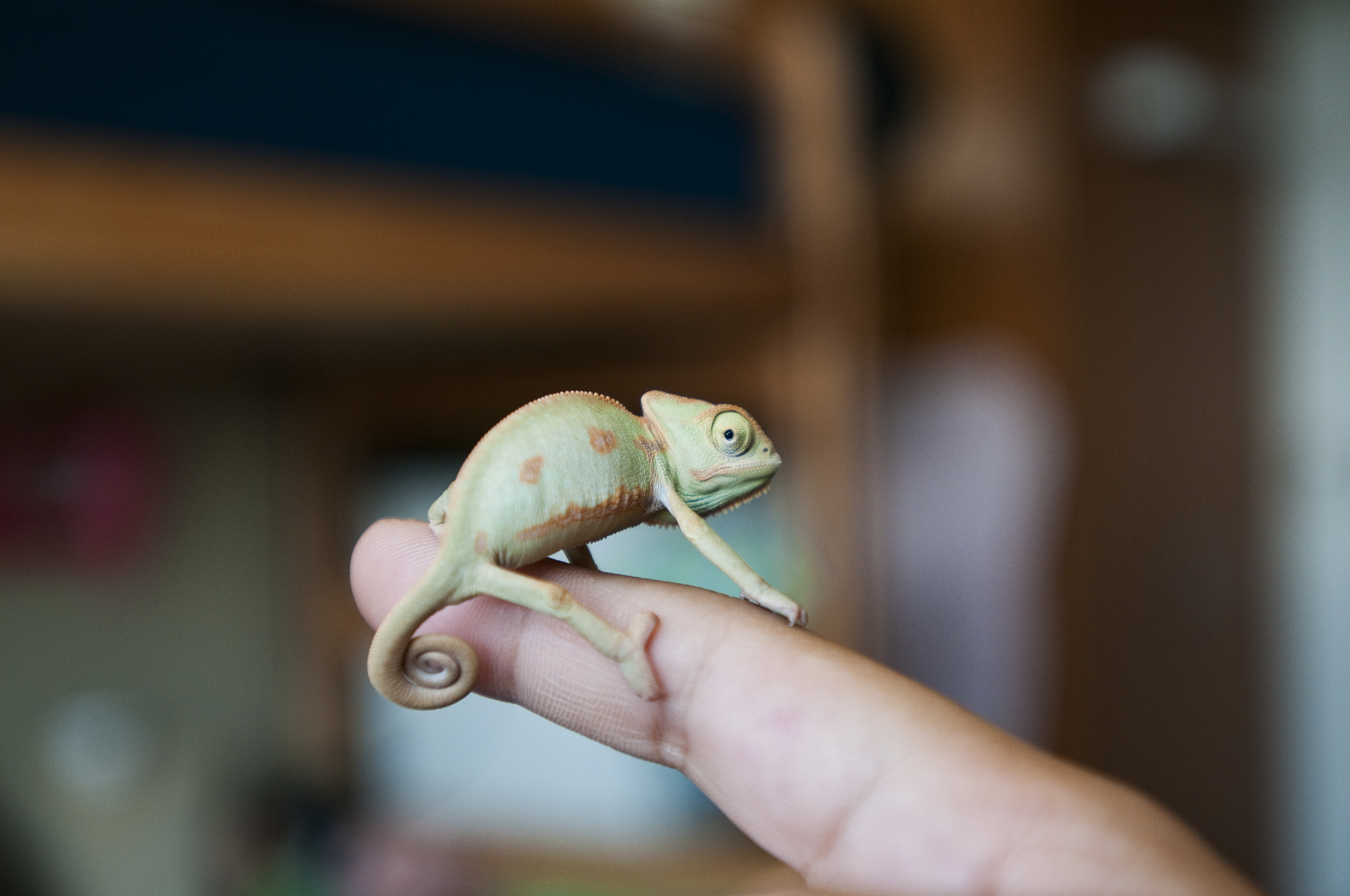Pets in residence: Students violate Housing's rules by raising forbidden pets in their rooms

Fish are the only pets allowed in UCLA residential halls and suites, but some students have broken the policy and brought in other animals ““ including Pascal, a baby chameleon who lives with a first-year student in the dorms.
By Erin Donnelly
May 1, 2012 2:05 a.m.
A fourth roommate moved into Steven Jing’s three-person dorm room during winter quarter last year. The short, white and long-eared addition was his bunny, Tiger.
The second-year electrical engineering student, who no longer lives on the Hill, was one of the residents who has broken Housing and Hospitality Services’ rule that allows only fish as pets in residential halls and suites.
Jing was given the bunny unexpectedly through his fraternity, and it soon became a welcome fixture in his room. Friends even got in the habit of stopping by just to play with the animal, he said.
With only a tiny cage, Jing and his other roommates opted to let the furry bundle roam free in their room.
But the extra freedom led to an extra mess.
“He peed and pooed everywhere,” Jing said. “We tried to clean it up but we didn’t have time to clean everything.”
Half-hearted attempts to potty train the animal using online instructional videos produced no noticeable results, Jing said.
Messes like these, which linger long after the students move out for summer, are one reason pets other than fish are not allowed in the residential buildings, said Dana Pysz, assistant director for the Office of Residential Life.
“Animals require attention,” Pysz said. “Residential halls are not set up to provide that kind of care.”
Noise level and potential allergy problems are additional reasons pets like dogs, cats and rabbits are forbidden. High rates of salmonella exclude reptiles as well, Pysz said.
Housing encounters fewer than five cases of unauthorized pets a year. They usually discover a puppy or a kitten fairly quickly through reports from housekeeping or resident assistants, he said.
The regulations did not dissuade Maria, a first-year biology student who asked to not have her last name printed to avoid repercussions from Housing, from fulfilling her love of chameleons in the dorms.
After an obsessive amount of searching online, Maria said she found a fellow UCLA student who was selling a baby chameleon in February. She bought the reptile and named it Pascal after the sidekick chameleon in the Disney movie “Tangled,” she said.
Pascal requires constant care, including buying live crickets for him to eat and keeping to his strict 12-hour sleep schedule. Although Maria suspects the latest batch of crickets might have gotten loose in her room, she said she thinks the hassle is worth it.
“It will be fun to raise him from a baby to when he is fully grown,” Maria said.
Carrie Gonzales, a second-year biology student, said she confirmed her suspicions that someone on her floor was keeping a dog when the student carried it out with her during a fire drill.
When pets are discovered, Housing threatens calling animal control if the pet is not removed, Pysz said. That plan, however, has never been put into action, he said.
The student then meets with his or her resident director and is charged for any additional cleaning expenses if necessary, Pysz said.
After two quarters housing his bunny, Jing said he escaped detection, despite living directly across from his resident assistant.
“Students do illegal things in their rooms all the time,” Pysz said. “We can’t do room checks every day.”

